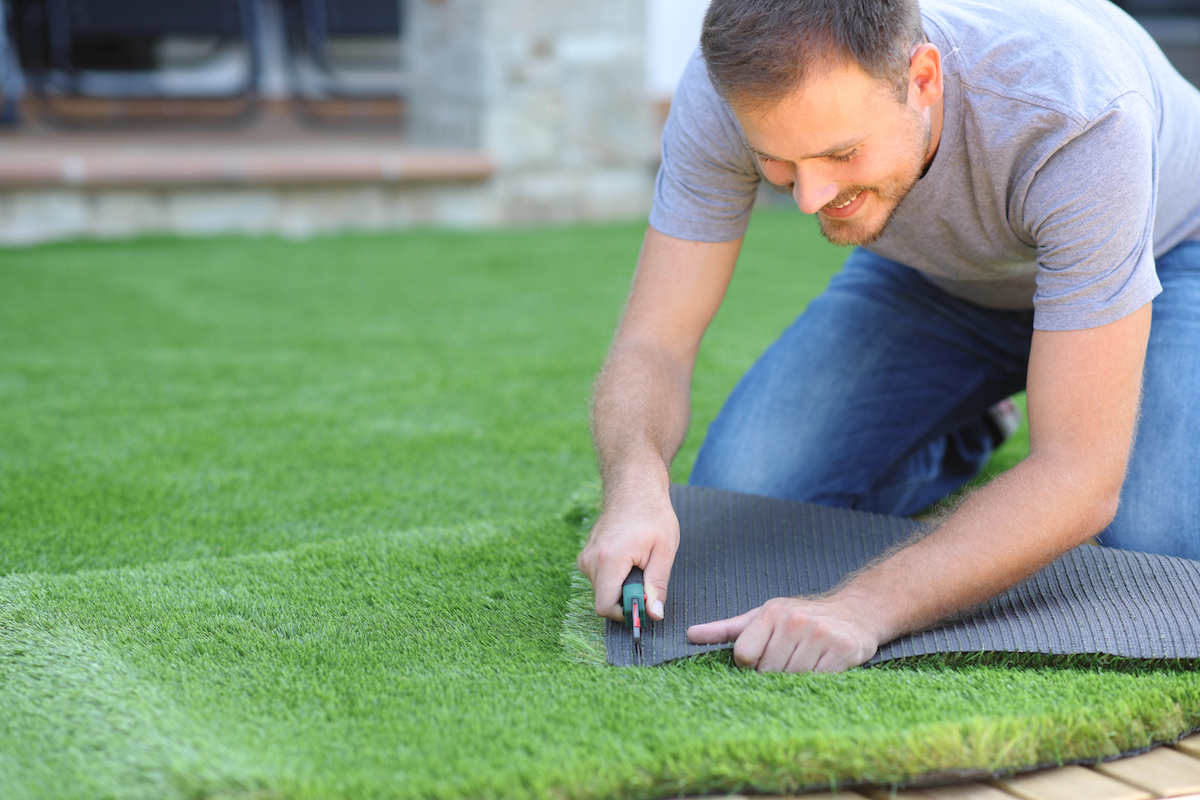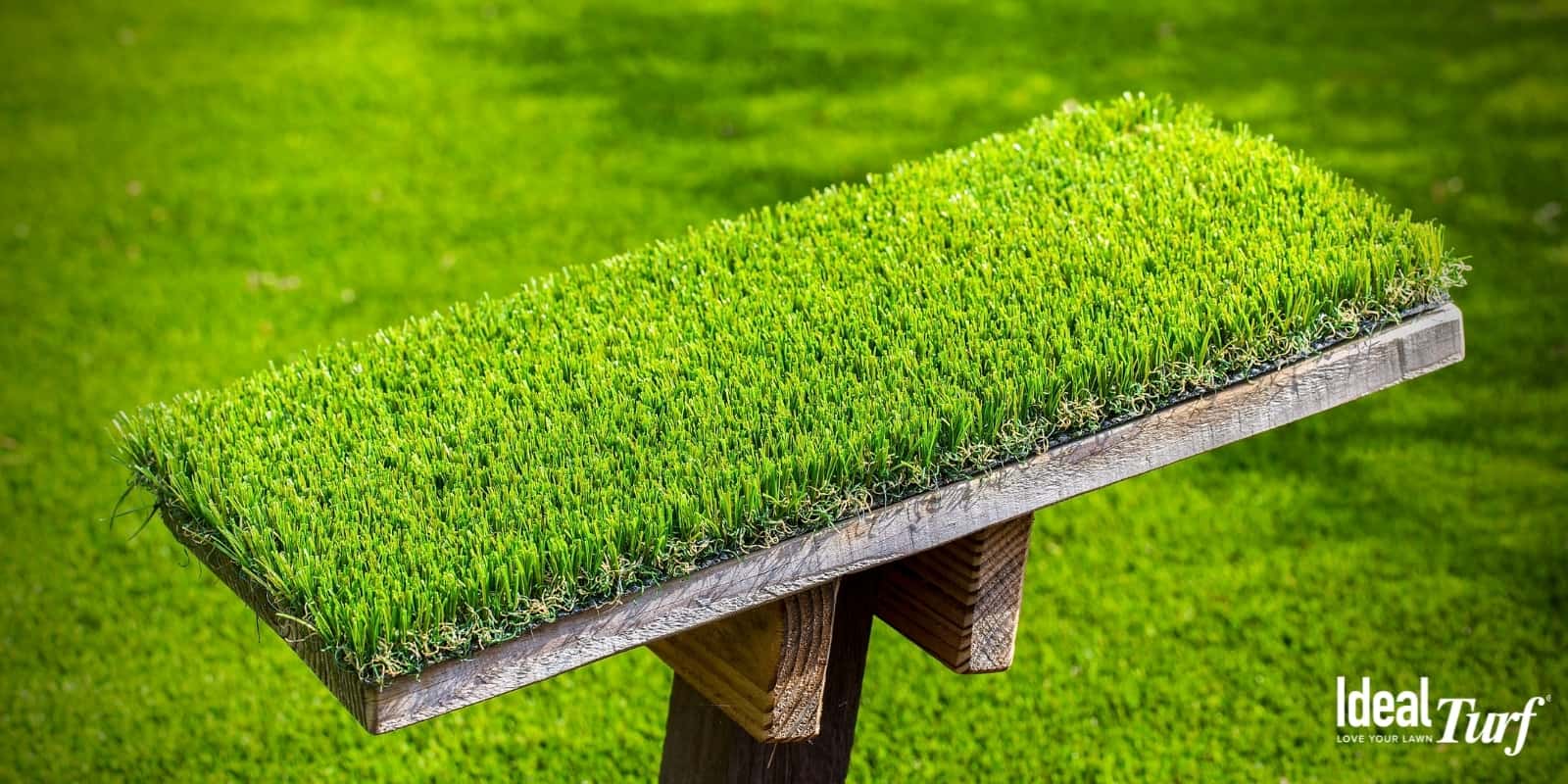Durable Arizona Artificial Turf for Home and Commercial Applications
Durable Arizona Artificial Turf for Home and Commercial Applications
Blog Article
See Why Homeowners Prefer Synthetic Grass for Sustainable Landscape Design Practices
As house owners significantly prioritize sustainability in landscaping, artificial grass has actually become a compelling alternative to conventional lawn. Its capability to conserve water, lower upkeep efforts, and decrease ecological influence settings it as a sensible selection for those looking for eco-friendly remedies. Furthermore, the aesthetic allure and convenience of man-made turf provide to varied layout choices. The effects of this change prolong past plain ease and visual appeals, motivating a more detailed examination of just how these choices influence broader environmental outcomes. What remains to be discovered is the complete scope of advantages that synthetic grass can use to house owners and the atmosphere alike.
Water Preservation Benefits
Among one of the most considerable benefits of synthetic grass is its duty in water preservation. Typical yard lawns require substantial amounts of water to maintain their lavish look, typically bring about overuse of regional water sources, especially in arid regions. In contrast, synthetic grass removes this demand totally, as it does not call for irrigation. This not just saves water yet likewise lowers the strain on local water supply, particularly during dry spell conditions.
Additionally, the installment of artificial grass can add to a more lasting landscape. Property owners can considerably reduce their water bills, permitting reallocation of resources to various other ecological campaigns or family uses. In addition, synthetic grass is made to withstand different weather conditions without the demand for supplemental watering, making it an optimal selection for areas facing water deficiency.
The ecological benefits expand past immediate water financial savings. By minimizing water intake, synthetic grass aids to minimize the impacts of environment adjustment, maintaining vital communities that are threatened by extreme water removal. As sustainable landscape design techniques gain traction, synthetic turf becomes a responsible selection for homeowners seeking to create environment-friendly exterior rooms.
Lowered Maintenance Initiatives
Synthetic turf dramatically minimizes maintenance initiatives compared to traditional lawn yards. With artificial lawn, home owners can remove the lengthy tasks connected with all-natural landscaping, such as mowing, fertilizing, and weeding. This not just conserves valuable time but also reduces physical labor, making yard treatment available for individuals of any ages.
Traditional yards require frequent cutting to maintain an aesthetically pleasing height, whereas artificial lawn continues to be regularly lush without the need for reducing. In addition, homeowners no much longer require to use plant foods or pesticides, which are often called for to maintain natural turf healthy and balanced.
Furthermore, synthetic grass is resilient and durable, needing minimal maintenance beyond occasional brushing and rinsing to remove debris. This convenience of upkeep enables homeowners to enjoy their outdoor rooms without the constant fear of upkeep, offering even more time for recreation and household tasks. Ultimately, the reduced upkeep efforts related to synthetic grass make it an enticing choice for those seeking a low-maintenance, visually appealing landscape.

Ecological Influence Decrease
There is a growing acknowledgment of the ecological advantages related to synthetic grass, specifically in regards to water preservation and decreased chemical usage. Conventional grass need substantial amounts of water, particularly in drought-prone regions, resulting in increased strain on local water sources. On the other hand, synthetic grass removes the need for irrigation, substantially minimizing water consumption and advertising sustainability.
Additionally, traditional grass upkeep typically includes the application of fertilizers, pesticides, and herbicides, which can add to soil and water air pollution. Artificial turf alleviates this ecological threat by needing minimal upkeep and virtually getting rid of the demand for dangerous chemicals. This not just enhances dirt wellness but additionally protects neighborhood communities from harmful overflow.
In addition, the production of all-natural grass lawns typically includes using fossil fuels for cutting and landscaping tools, more adding to greenhouse gas exhausts. By choosing synthetic grass, homeowners can substantially lower their carbon footprint connected with grass care tasks.
Visual Appeal and Convenience
Along with its environmental benefits, synthetic grass supplies substantial visual allure and convenience for landscaping. Property owners can attain a rich, environment-friendly appearance year-round, removing the seasonal variations typically related to natural grass. This regular aesthetic not only enhances the aesthetic allure of a property yet additionally contributes to a properly maintained and polished look.
In addition, artificial grass is readily available in a range of appearances, styles, and colors, permitting modification to suit private choices and style themes - Arizona turf. Whether utilized in residential yards, business rooms, or entertainment locations, it can seamlessly incorporate right into varied landscape design styles, from modern minimal to lavish tropical settings
The convenience of man-made lawn expands past simple appearance; it can be mounted in numerous areas, consisting of rooftops, patio areas, and also indoor rooms, producing chances for special landscape design services. here Additionally, it is suitable for a variety of tasks, from youngsters's backyard to pet-friendly settings, supplying performance without endangering design.
Eventually, the visual charm and versatility of synthetic grass make it an appealing alternative for homeowners seeking sustainable landscape design options that do not sacrifice appeal for environmental obligation.

Long-Term Price Cost Savings
One of one of the most compelling advantages of synthetic grass is its possibility for long-term expense savings. Unlike all-natural grass, which requires useful source routine maintenance-- including mowing, watering, fertilizing, and parasite control-- synthetic grass significantly minimizes these recurring expenditures. House owners can save a considerable quantity on water costs, particularly in regions where water shortage is a pushing concern. The removal of lawn care solutions even more adds to economic savings, as there is no need for customized equipment or labor.
Furthermore, synthetic grass has a life expectancy of 15 to 25 years, depending upon its top quality and usage. This resilience lessens replacement costs, making it a more affordable selection in the long run. The first investment in synthetic grass can usually be redeemed via the cost savings accrued over time.
While the ahead of time cost might appear greater contrasted to sod installation, the cumulative financial savings from decreased upkeep and water use often exceed these first expenses. Inevitably, the fostering of synthetic grass not only promotes a sustainable landscaping remedy yet additionally provides home owners a financially savvy alternative that aligns with lasting budgeting objectives.
Conclusion
Artificial turf arises as an engaging option for lasting landscape design, offering considerable advantages in water preservation, reduced upkeep initiatives, and diminished environmental effect. As areas significantly prioritize ecologically pleasant practices, the fostering of synthetic grass represents a progressive step toward accomplishing lasting and resilient landscapes.
Furthermore, artificial lawn is designed to withstand numerous climatic conditions without the demand for supplementary watering, making it an ideal option for regions facing water scarcity. Find Out More (Artificial turf companies phoenix)

Artificial grass arises as a compelling alternative for lasting landscape design, providing substantial benefits in water conservation, decreased upkeep initiatives, and reduced ecological impact.
Report this page